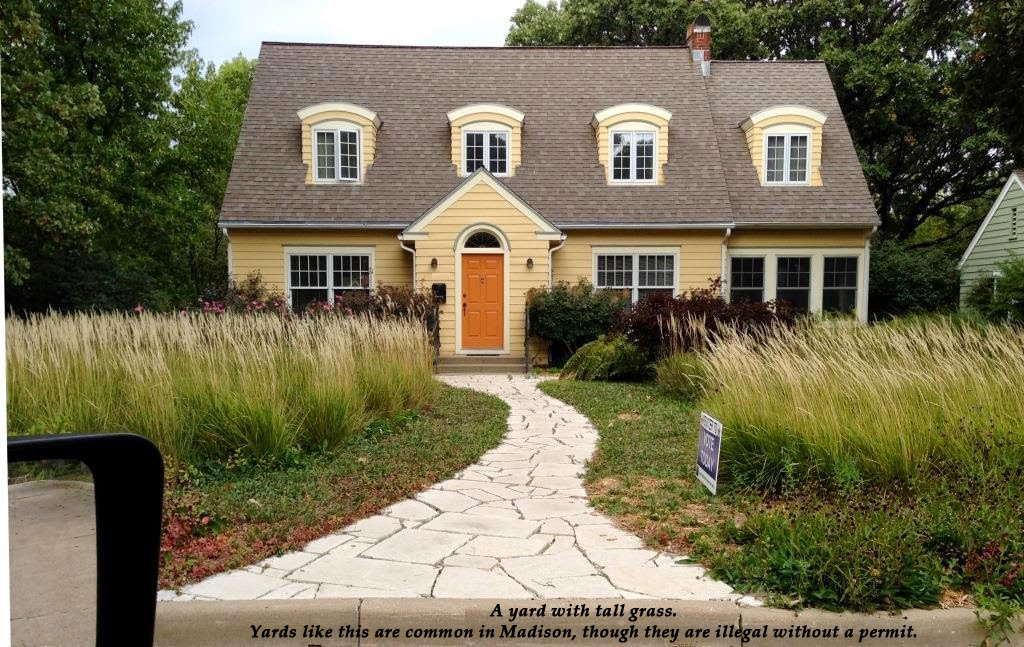By Janette Rosenbaum
In Madison, you cannot have any plants in your terrace within two feet of the street. You cannot have any plants along the bottom of your driveway that are more than two feet tall. And you cannot have a tree branch over the sidewalk, unless it is higher than seven feet (even on those occasional days when it is loaded with snow).
All of these situations are illegal under Madison’s city ordinances. Obviously, there are many violations of these ordinances in our neighborhoods. Because the city’s Department of Building Inspection (BI) does not have the resources to search for and prosecute them all, it relies on citizen reports to locate and address violations.
This report-driven process might work fine if most of the violations were true public safety hazards created by negligent property owners. However, this is not the case. In the several decades since these ordinances were passed, public opinion has increasingly turned away from manicured lawns and geometrical hedges. Instead, today’s Madison residents want a city filled with abundant vegetation.
This was demonstrated by the Schenk-Atwood-Starkweather-Yahara Neighborhood Association (SASYNA), located on the east side of the isthmus. During the summer of 2015, several members of the association surveyed the main street in their neighborhood, and found that 65 out of 91 houses — or 71% — were in violation of at least one of the ordinances.
Normally, when an ordinance is so out of step with public opinion, an understanding develops that the ordinance is no longer enforced – or, at least, is enforced only when the violation constitutes a true public safety hazard. But this is not the case in Madison either. Rather, the citizen-report process works as follows: Any Madison resident can use the complaint form to report a violation on private property in the city. They can do so anonymously, and they are not required to demonstrate that the violation is creating a safety hazard — or even to claim that this is the case. Thus, a resident can complain about a property because they simply do not like the vegetation… or because they simply do not like the owner of the property. There is very little risk of repercussion, and BI is virtually required to take the complainant’s side.
Abuse of the complaint system is not a hypothetical concern. Despite the SASY neighborhood’s overwhelming “vote” for more plants, last summer dozens of properties received complaints, possibly from a single resident. Although even a BI employee agreed that the anonymous complainant(s) just had “nothing better to do”, a number of the complainees were forced to remove gardens that they had worked hard on and enjoyed. Some spent months fighting legal battles to keep their favorite plants.
Many of these ordinances are currently being revised, and potentially will be eliminated. In the meantime, two reforms to the enforcement process would help to bring it in line with modern-day opinion, and protect Madison’s majority from the tyranny of the handful who still prefer rigidly-maintained vegetation.
First, BI employees should be trained to distinguish between a technical violation and a true public safety hazard. Second, complainants should be required to give their names when filling out the form, and could be asked to indicate whether they’ve attempted to resolve the safety problem — if indeed there is a safety problem — directly with their neighbor. These simple changes would limit abuse of the system, and would help to strike a balance between public safety and the ecological sustainability that residents clearly want.
An upcoming second part of this article will review why Madison’s vegetation ordinances exist, and whether they are achieving their purposes.

